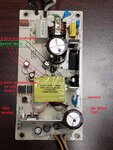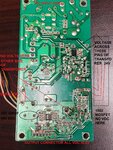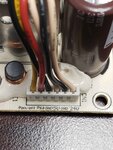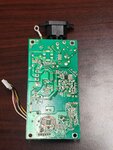imcool1
Newbie level 4

hello,
this printer power supply is dead,I cant figure out with my limited knowledge that why the lower output part of circuit is not getting any DCV. I have measured voltages across transformer and I found 24v but nothing on the other side of transformer, please have a look at pictures, any help is kindly appreciated. thanks.
Please, right click on image and open in new tab, for some reasons it will show up too big in this post




Thank you
this printer power supply is dead,I cant figure out with my limited knowledge that why the lower output part of circuit is not getting any DCV. I have measured voltages across transformer and I found 24v but nothing on the other side of transformer, please have a look at pictures, any help is kindly appreciated. thanks.
Please, right click on image and open in new tab, for some reasons it will show up too big in this post




Thank you











